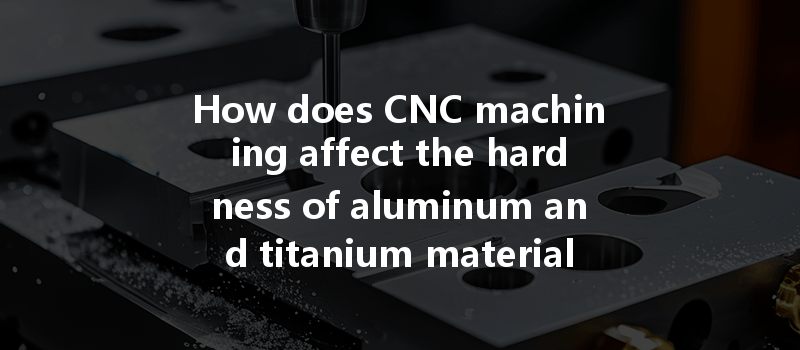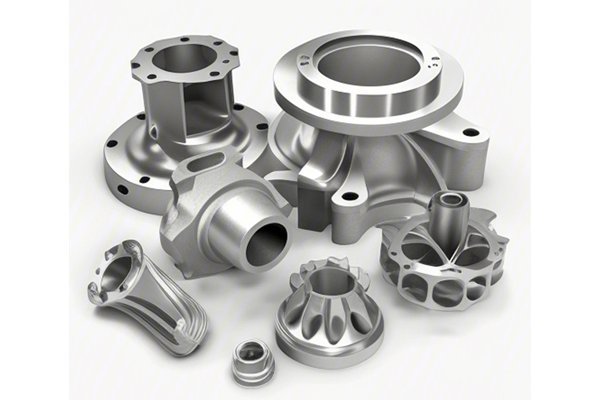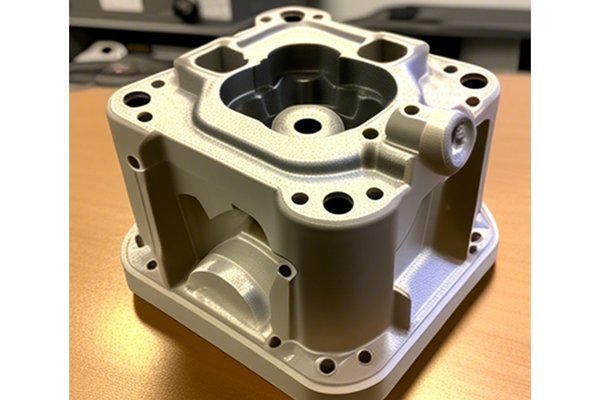Did you know that CNC machining, often referred to as the backbone of modern manufacturing, revolutionizes how we shape and work with materials like aluminum and titanium? These two metals, widely used across several industries for their exceptional strength-to-weight ratios and corrosion resistance, exhibit varying hardness qualities depending on their processing methods. In this blog, we will dive deep into the intricacies of CNC machining’s impact on the hardness of aluminum and titanium, discussing how these changes manifest in various applications.
Understanding Material Hardness
Before we explore the specific effects of CNC machining on aluminum and titanium, it’s essential to grasp what hardness is and why it matters in manufacturing. Hardness generally refers to a material’s resistance to deformation, scratching, or indentation. For engineers and manufacturers, understanding hardness is critical because it affects a material’s performance, lifespan, and suitability for specific applications.
The Hardness Scale
Various methods exist to measure hardness, with the Rockwell and Brinell tests being the two most common. Understanding these scales is vital when discussing how CNC machining influences hardness. The Rockwell test measures the depth of penetration of an indenter under a large load compared to the penetration made by a preload. Conversely, the Brinell test uses a harder steel or carbide ball and measures the diameter of the indentation left on the material.
Hardness in Aluminum and Titanium
Both aluminum and titanium can be treated to alter their hardness significantly. Aluminum, for example, can be heat-treated to improve hardness through processes such as solution heat treating and aging. Titanium, on the other hand, achieves its desired hardness mainly through alloying elements and heat treatment techniques, including alpha-beta phase transition hardening.
The Role of CNC Machining in Influencing Hardness
One of the primary ways CNC machining affects the hardness of the workpiece involves tool selection. The type of material used for the cutting tool can significantly influence how effectively a machine can cut through harder metals. For aluminum, tools made of high-speed steel (HSS) or carbide are common, while titanium often requires specialized tooling, including carbide tools with coatings like titanium aluminum nitride (TiAlN) to resist wear.
Solution:
When selecting tooling, it’s essential to consider the hardness of the material being machined. Using the right tool can minimize wear on both the tool and the workpiece. For instance, CNC machining of titanium requires a slower feed rate to avoid excessive heat, which can negatively affect its hardness.
The cutting speed and feed rate are critical parameters in CNC machining that have a direct impact on the final hardness of aluminum and titanium. Faster cutting speeds may lead to increased temperatures during machining, causing potential softening of the material, especially if its thermal properties aren’t well-managed.
Solution:
To counteract the adverse effects of speed, manufacturers can decrease the cutting speed for sensitive materials like titanium and optimize feed rates. Lower cutting speeds and feeds can reduce the risk of thermal damage, preserving hardness.
Keeping the machining area cool is paramount when working with hard materials. Effective cooling methods such as misting, flooding, or using chilled cutting fluids can help manage the heat generated during machining operations.
Solution:
Utilizing state-of-the-art cooling systems that are tailored for specific materials (aluminum versus titanium) can lead to better hardness retention. For aluminum, a proper coolant can enhance surface finish, while titanium may require a specific type of coolant that minimizes chemical reactions at high temperatures.
Post-machining treatment options, including heat treatment and surface hardening techniques, play a significant role in maintaining and enhancing hardness. Heat treatment, such as aging for aluminum alloys or stress relieving for titanium, can improve hardness after machining.
Solution:
Implementing post-machining processes designed for the specific alloy in use can significantly enhance hardness. For instance, a common practice for aluminum is to use T6 heat treatment, where solution heat treatment followed by aging leads to increased hardness.

After the CNC machining process, it’s critical to conduct thorough quality inspections to measure the hardness of the finished product. This ensures that the process conditions established lead to the desired outcome, and any necessary corrections can be made in subsequent batches.
Solution:
Employing advanced hardness testing techniques post-machining can help identify any deviations from the expected hardness, allowing manufacturers to streamline their processes accordingly. Techniques such as micro-hardness testing can pinpoint issues with specific areas on the part for further investigation.
Applications Where Hardness Matters
Aerospace Industry
In aerospace applications, both aluminum (like 7075 and 2024 alloys) and titanium (such as Ti-6AL-4V) are critical for various components due to their strength and lightweight properties. In this sector, a slight modification in hardness can have significant implications on performance and safety.
Example:
CNC-machined titanium parts are often subjected to rigorous testing for hardness and structural integrity, ensuring they meet the high demands of aerospace regulations.
Automotive
Within the automotive industry, aluminum components must withstand not only the forces of operation but also environmental factors. Using CNC machining to finely tune the hardness of aluminum parts results in lighter, stronger vehicles.
Example:
CNC machined aluminum engine blocks utilize heat treatment processes to optimize hardness, ensuring performance and longevity while still achieving weight savings.
Medical Devices
Hardness in medical devices plays a crucial role in their performance and cleanliness. The CNC machining of titanium for surgical implants demands a specific hardness to cope with biological environments and stress from bodily movement.
Example:
Through carefully calibrated CNC processes, medical-grade titanium implants can be machined to attain the right hardness that meets FDA regulations, ensuring functionality and patient safety.
Tooling and Manufacturing
The production of tools themselves using aluminum and titanium necessitates finely tuned hardness levels to ensure durability and precision during their operation.
Example:
Machined tooling components often require surface hardness treatment processes such as anodizing for aluminum or nitriding for titanium, increasing wear resistance and extending tool life.
In conclusion, the hardness of aluminum and titanium materials is profoundly influenced by various CNC machining factors including tooling choice, cutting parameters, cooling methods, and post-maintenance treatments. Each of these elements plays a crucial role in tailoring the hardness to meet specific application requirements, highlighting the importance of a holistic approach to machining processes.
As industries continue to innovate and demand higher performance materials, understanding the intricacies of how CNC machining affects material hardness is not just advantageous but essential for competitive manufacturing. The ability to customize and optimize machining processes will be a deciding factor that shapes the future of industries relying on aluminum and titanium components.
Ultimately, the exploration of CNC machining parameters serves as a reminder of the continuous evolution in the manufacturing sector—providing ample opportunity for innovation and prompting ongoing research to uncover even more effective methodologies for dealing with hardness in metal processing. Through this knowledge, manufacturers can remain at the forefront of technological advancements, ensuring the production of high-quality, durable materials fit for the challenges of modern applications.



